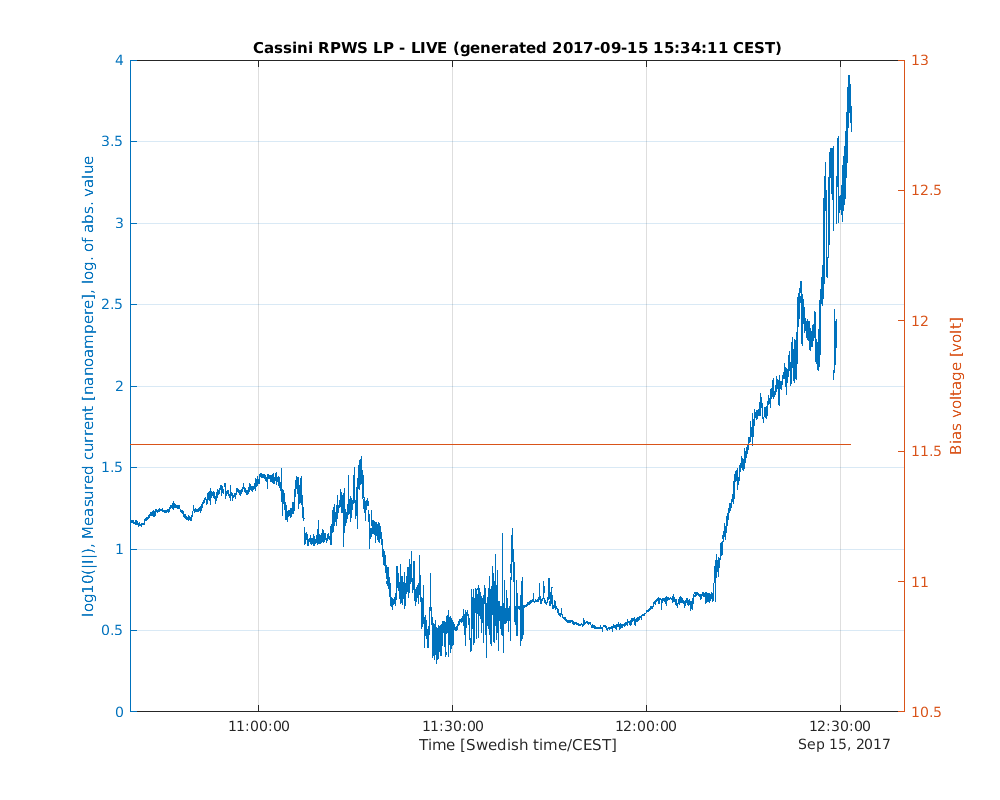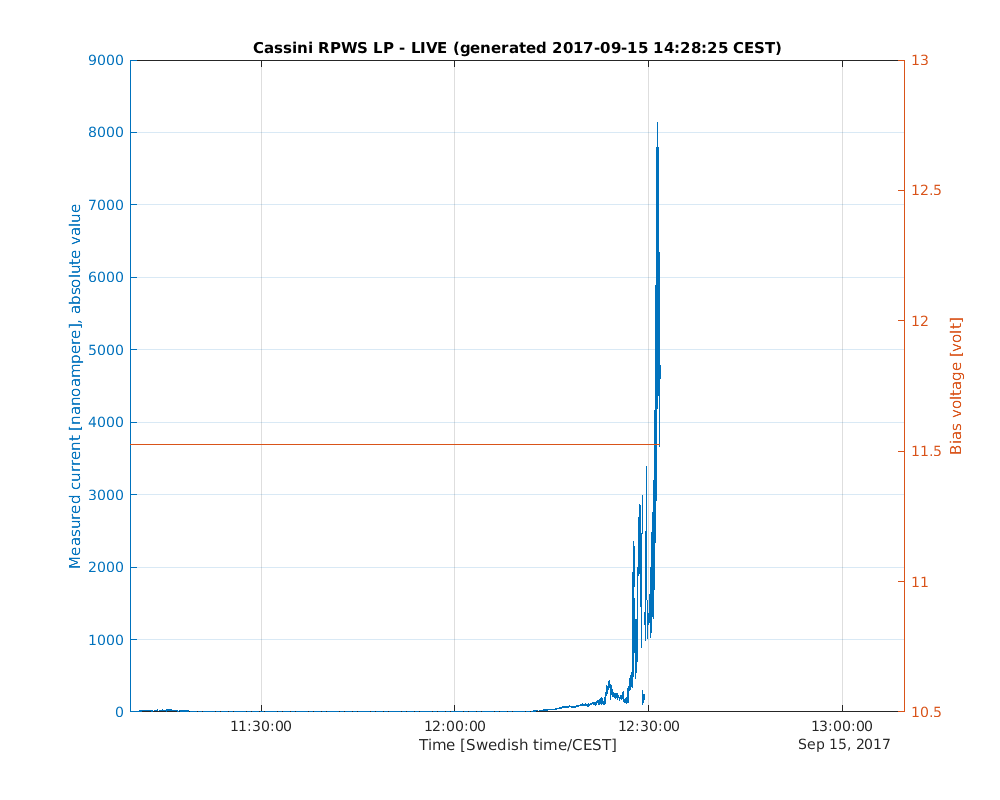
IRF
IRF Uppsala
RPF programme
IRF-U Staff
Seminars
Courses
PhD studies
Examensarbete
Workshops
Cluster
...EFW
...Quicklook
Cassini
Rosetta
Solar Orbiter
Intranet
| INSTITUTET FÖR RYMDFYSIK | UPPSALA |
 |
|
| Swedish Institute of Space Physics | (59°50.272′N, 17°38.786′E) |
Cassini RPWS LP end-of-mission live data
NOTICE: This page refers to a live event that has already passed! It is only preserved for archival purposes.

Context
On Sept 15th 2017, the Cassini spacecraft, orbiting planet Saturn in the outer Solar System, will end its mission by plunging into Saturn's atmosphere. Onboard the spacecraft is, among others, the RPWS LP instrument designed and built in Uppsala, Sweden by the Swedish Institute of Space Physics (IRF). During Cassini's final hours, this page will display live data from the RPWS LP instrument, plotted live as the signals are received on Earth, and as the spacecraft simultaneously plunges into the planet's thick atmosphere to end its mission.
For more context, see the IRF Cassini homepage or NASA's web page on the end of the Cassini mission.
Summary of the instrument and what the plot shows
The RPWS LP instrument is part of a larger instrument, "Radio and Plasma Wave Science" (RPWS) led by a group at the University of Iowa, United States. LP stands for "Langmuir probe", a type of instrument used for measuring plasma in space. Plasma in this context means partly or entirely ionized gas, which is present as an extremely thin gas almost everywhere in space. On Sept 15 2017 however, our chief target is the ionized layer of Saturns upper atmosphere, known as the ionosphere.
In short, the instrument works by the LP electronics applying a voltage to a conductive sphere mounted on a boom sticking out from the spacecraft. It then measures the current that flows when charged particles hit the sphere. A positive voltage makes the sphere attract free electrons from space. The more electrons there are out in space, the greater the current we measure. Similarly, a negative voltage attracts (positive) ions to the sphere, and the more ions there are, the greater the current we measure. On Cassini, we have done this since 2004 around the moons Titan and Enceladus as well as in the large magnetic bubble called the magnetosphere which surrounds Saturn. Now, in the last moments of the mission we aim at exploring Saturn's ionosphere deeper than ever before.
The plot shows the RPWS LP instrument's applied voltage and measured current in a mode where the voltage is constant. In the conditions we expect, this current should be proportional to the electron density (number of free electrons per unit volume) in space at the position of Cassini. We will later analyze in detail how the current varies with the applied voltage to find the plasma density and temperature as well as how electrostatically charged the spacecraft is itself, but the data plotted here will give a first impression of Saturn's ionosphere to a depth nobody has ever explored before. A real Grand Finale!
Technical details about the plot and updates
We expect to be able to display continuously updated live data starting at the earliest Sept 15 2017, 10:37 Swedish time/CEST (08:37 GMT/UTC). The last signal from Cassini is expected to be received on Earth Sept 15 2017 at around 13:54 Swedish time/CEST (11:54 GMT/UTC).
Note that the estimated time of the loss of signal has been changed!
Note that before the live event, data will not be updated, or the plot will show no or old data, or be different due to testing. Data may also not be available for the entire time interval, i.e. the graph may have legitimate holes in it. Updates may occasionally lead to less data being plotted, due to technical difficulties. The y axis should scale automatically as data changes.
The web page is configured to make the web browser reload it automatically every 30 s, although the underlying plot will likely only be updated more rarely (at most once every few minutes). Note that the time given is the time of the measurement and that the corresponding data is available at the earliest ca 83 minutes later, due to the time it takes for the radio signal to travel from the spacecraft to the Earth.